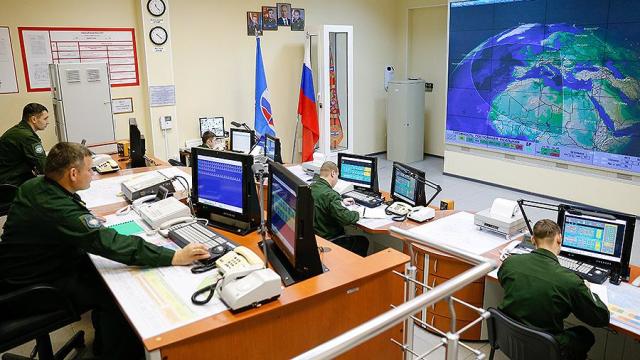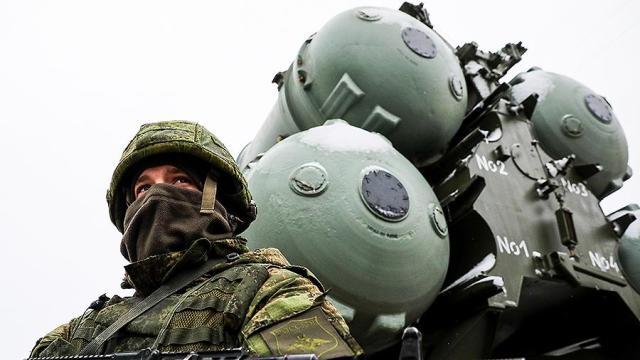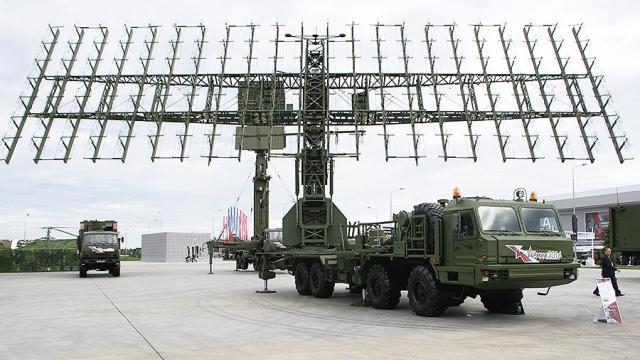The President spoke about the "antidote" at the annual press conference
At the final press conference on December 17, Vladimir Putin said that Russia is "actively working" on an "antidote" to the future hypersonic weapons (GZO) of other countries. The President did not specify which systems are in question, but information about some of them has previously appeared in open sources. Experts note that protection against such weapons is an extremely difficult, but feasible task. how it is going to be solved in our country-izvestia understood.
protecting the future
Sources of "Izvestia" in the Ministry of Defense and the military-industrial complex explained that now there are several research and development works on means of protection against hypersonic weapons. All of them are carried out within the framework of a single plan to create a layered defense. counteract will be the ammunition itself, and their carriers, and guidance and targeting systems. Some of the developments have already reached the testing stage, the interlocutors added.
Some information about the ongoing work can be found in open sources. So, in 2019, JSC "Scientific and Production Enterprise "Delta" patented in Russia a method of combating hypersonic aircraft. The company, which is part of the Rostec State Corporation, has proposed a scheme for destroying them with a powerful laser, as well as a passive detection method that does not require the use of radar.

Photo: TASS/vitaly nevar
Image Source: iz.ru
It is known that in the interests of the Ministry of Defense, several variants of laser weapons are being developed at once. The mobile complex "Peresvet"has been on combat duty in Russia since 2018. The military does not disclose its functions, but it is believed that it is designed to blind reconnaissance satellites in near space. The press service of the Ministry of Defense reported that work is underway to increase capacity and plans to place it in the future on an aircraft carrier.
"The fight against hypersonic weapons is a very difficult task," military expert Vladislav Shurygin explained to Izvestia. — but by this collective name we mean a variety of systems, with different speeds and characteristics. You will have to defend against them in different ways. Most promising foreign developments have a speed of five to eight times the speed of sound. How to resist them is clear, there have been approaches to this for a long time. It is much more difficult to create means against heavy and powerful missiles that fly three to four times faster and maneuver in flight, such as our"Vanguard".
Even the best anti-aircraft missile system for such high-speed targets will have a much shorter range than for conventional aircraft. It will be possible to cover some individual objects, but not the entire territory. Therefore, the problem of hypersound has to be solved comprehensively, using both direct and indirect methods of fighting, weapons based on new physical principles. We will also need early detection tools and the integration of all air defense and missile defense systems into a single automated network, the expert believes.

Laser complex "Peresvet»
Image source: photo: ria Novosti/ministry of defense of the russian federation
in order to make the enemy's weapon harmless, it is not necessary to physically destroy it. it is enough to suppress the guidance means with interference. "blinded" warhead will not be able to accurately hit the target. For this purpose, our country is developing modern means of electronic warfare.
as previously reported by izvestia, a multi-functional long-range interception missile system based on the mig-31 fighter is also under development to defeat carrier aircraft of guided weapons before they have time to use it.
already today
but in russia, some systems designed to detect and destroy tactical and operational-tactical gzo have already been put into service. Since last year, the S-400 Triumph anti-aircraft missile systems have been regularly training at the training grounds to intercept the latest Favorit-RM target missiles that mimic promising hypersonic aircraft of the United States, EU countries and China. Built on the basis of a modified rocket from the S-300, they accelerate to 1900 m / s and are able to maneuver in flight.

Photo: TASS/Sergey Maligawa
Image Source: iz.ru
Similar to the" Triumph " capabilities to defeat hypersonic objects have new systems S-300V4, which are supplied to the Ground Forces. And the Prometheus, which is at the final stage of creating the S-500, will have an increased radius of destruction of the GZO in comparison with them and cover more territory from it.
"we are already at the stage of a new hypersonic arms race," says military historian dmitry boltenkov. — while the us air force is going to hang its latest missiles on b-52h bombers. They are perfectly familiar to the air defense systems of the USSR, and now Russia. These are old planes, slow-moving and clearly visible on radar. you can and should fight them before they apply their combat load.
But, according to the expert, in a decade hypersonic missiles may appear on other carriers, including ground-based launchers, ships and submarines. it is much more difficult to deal with them.

b-52h bomber with rapid reaction instrumentation and measurement machine
Image source: Photo: REUTERS/U.S. Air Force/Giancarlo Casem
In such a situation, the already familiar and proven tools of deterrence will work. Protection against the use of hypersonic weapons by the enemy will be the inevitability of a retaliatory strike, both hypersonic and nuclear. to do this, it is necessary to maintain in order its own high-tech weapons and strategic forces, means of timely detection of attacks, dmitry boltenkov believes.
A year ago, the Defense Ministry announced its plans to create a solid radar field against aerodynamic targets, including hypersonic ones. The first ultra-long-range over-the-horizon detection station "Container" has already been put into operation in December 2019. It is able to warn about the approach of carrier aircraft to the borders of the country long before they reach the launch range of hypersonic or conventional cruise missiles. It is planned to build several more such radar stations. the next one will have to watch the arctic. this area is traditionally considered the most vulnerable to a missile strike by us strategic aviation.
According to the military department, the Container station located in Mordovia this year tracked about 10 thousand air targets per day at a distance of up to 2000 km from the Russian borders over Western Europe, the Middle East, the Persian Gulf and the Mediterranean. In the summer and autumn, it was successfully used to detect B-52 flights over the Black and Baltic Seas.

RFCs "Sky-M»
Image source: Photo: TASS/Ladislav Karpov
Nebo-M mobile radars are also capable of detecting hypersonic objects. They detect air targets for 600 km, and for ballistic missiles in near space, the detection range reaches 1800 km. Such locators are already actively supplied to all military districts.
In the future, space satellites will also join this task of monitoring GZO launches. All information from radars and other detection devices will flow into a single automated control network, which will allow you to build an early warning system similar to that created for detecting launches of intercontinental ballistic missiles.
Anton Lavrov

